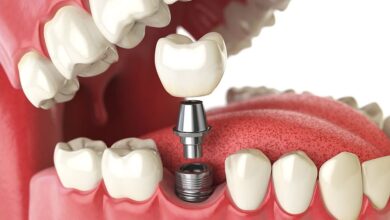The Latest Breakthroughs in Parkinson’s Disease Treatment

The drug NLX-112 was originally developed to treatment dyskinesia but could also treat the motor symptoms linked to Parkinson’s. Its success in a recent UMMC trial offers hope that a multi-faceted therapy for PD may be within reach.
A new test can accurately detect Parkinson’s, a milestone that opens the door to better diagnoses, potential treatments, preventatives, and cures.
Focused Ultrasound
A noninvasive therapy called focused ultrasound uses MRI imaging to deliver high-intensity ultrasound waves that heat and destroy tissue deep within the body without incisions. It’s now available in Philadelphia to treat tremors related to Parkinson’s Disease and essential tremor (ET).
During the procedure, sound waves are aimed at an area in the brain called the thalamus. The acoustic energy generates heat at the point where the sound waves converge, which stops circuits responsible for tremors from firing and eliminates or reduces the tremors.
The treatment, known as MR-guided focused ultrasound (or MRgFUS), is FDA-approved for ET and is expanding rapidly to treat other neurologic diseases. MRI serves as the eyes of the treatment, and its thermal monitoring system acts like a thermometer to ensure that only the targeted area is damaged.
Unlike other surgical treatments, such as deep brain stimulation, this technology does not require surgery, ongoing programming, or battery replacements. It may also offer a potential solution for people who cannot take anticoagulants or have other conditions that make options like DBS dangerous.
Neural Treatment Transplantation
The transplantation of human embryonic dopamine neurons into striatal lesions has proven to be an effective treatment of Parkinson’s disease. The grafts can survive and reinnervate the denervated striatum and produce dopamine in a normal fashion. This has led to the fact that many patients can withdraw from L-dopa treatment and enjoy an improved quality of life.
Moreover, the grafts can be infused with human fetal precursor cells, avoiding immunosuppression. Using fetal precursor cells allows for a quicker recovery and reduces the risk of rejection.
Histopathological and immunocytochemical evaluation of surviving putamenal grafts revealed regions expressing striatal markers (P-zones) interspersed with areas not representing these markers. The P-zones were selectively immunoreactive for acetylcholinesterase, NADPH-d, parvalbumin, and calretinin, and for projection neurons enriched in DAT and VTA dopamine transporters. In one patient, bilateral implantation resulted in a complete restoration of motor function with a significant reduction in facial and limb dyskinesias. In addition, she was able to decrease her dose of carbidopa/levodopa and was able to discontinue all other antiparkinsonian joinpd medication.
Biomarkers
Neurons communicate with each other through chemical messengers that cross the gap between neurons, called a synapse. Normally, neurons in the substantia nigra produce a neurotransmitter critical for movement called dopamine. But by the time a person with Parkinson’s is diagnosed, most have lost 60 to 80 percent of these dopamine-producing cells.
A biomarker is a clinically relevant measure of the state of a biological system that can be measured reliably and accurately. Unlike medical symptoms, which are self-reported by patients, biomarkers are objectively measurable.
Currently, biomarkers are used in many clinical studies to help guide treatment development. A predictive biomarker identifies individuals more likely to experience a positive or adverse effect from an intervention, while prognostic biomarkers help determine trial entry and exclusion criteria.
A key to successfully translating a biomarker from preclinical research into the clinical setting is to prove that differences in a clinical endpoint correlate with the presence, absence or level of a biomarker. This requires extraordinary scientific rigor and is one of the main challenges of biomarker development.
Drugs
Although Parkinson’s is not curable, it can be managed by medications and treatments such as deep brain stimulation. Symptoms of Parkinson’s vary from person to person, so treatment must be tailored to each individual via a shared decision-making process with your doctor.
Medications such as levodopa-carbidopa enteral suspension (LCS), pramipexole, ropinimus, and apomorphine can help reduce tremor and rigidity by blocking a chemical in the brain called acetylcholine. They can also help to minimize movement fluctuations, the ‘wearing-off’ of medication that can cause uncontrollable writhing movements called dyskinesias and Nominymph depression.
Other symptoms of PD, such as difficulty thinking, loss of sense of smell, constipation, and urinary incontinence, can be treated with medicines and physiotherapy. Physiotherapy can help improve balance, strength and mobility and should be delivered by a PD-trained physiotherapist.
A protein normally found in the body, alpha-synuclein, can misfold and clump together in PD, leading to neuronal death. NINDS-funded researchers are working to boost the activity of a protein called parkin that may protect neurons against PD.
Lifestyle Changes
Several studies suggest that certain lifestyle changes can help ease PD symptoms. These may include exercise stress reduction and complementary medicine, such as herbal remedies and massage.
A healthcare team often focuses on non-movement symptoms like sleep, constipation and urinary dysfunction, pain, fatigue, depression, and anxiety. Therapists can also teach techniques to improve speech and swallowing, and assistive devices can be used to aid mobility.
Neurosurgeons can help relieve the involuntary movement problems of PD by targeting deep brain structures that control motion, such as the thalamus, globus pallidus and subthalamic nucleus. This procedure, called stereotactic surgery, involves fixing a frame to the skull under local anesthesia and using diagnostic imaging to pinpoint the target areas. It is offered in specialist neuroscience centers around the UK. It is only suitable for a few people with PD with severe on-off fluctuations or involuntary movements.
A varied diet rich in protein, vegetables and fiber can improve symptoms by reducing the inflammation associated with Parkinson’s. Eating smaller meals more frequently and avoiding foods high in salt, sugar, trans fats and saturated fats is important.





